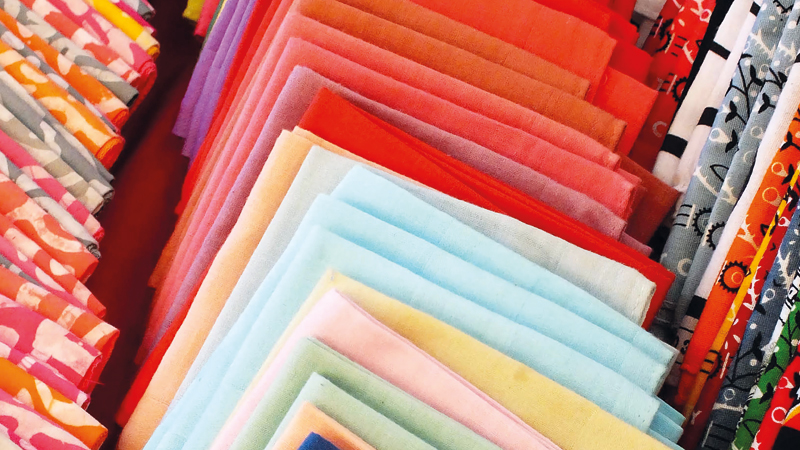That was the key message from the first-ever Textile Circularity conference organised by the Bureau of International Recycling.
Speakers stressed the importance of trade between developed economies and Africa, dismissing media reports that 40% of clothing exports were suitable only for landfill. Representatives from Ghana, Kenya, and Uganda countered such claims, arguing that detailed research showed the proportion was actually in single figures. They said it made no sense for astute African businesses to import textiles from the EU or the US they could not use.
Participants also grappled with a range of issues facing the used textile markets, including the impact of EU regulations, “fast fashion”, the definition of “waste” and emerging technologies.
BIR held the event in Brussels on 17 September at a time when the EU sector is struggling. In a pre-recorded video message, President Susie Burrage OBE said textile reuse and recycling was at a turning point and the industry needed help to overcome the challenges it faced.
Ms Burrage insisted that collective efforts to deliver proper sorting, reuse, and recycling and repurposing were vital to achieving a circular economy in textiles in both developed and developing countries.
“The narrative around end-of-life, or end-of-use, textiles is becoming increasingly tangled,” she told delegates by video link. “Media headlines often paint a one-sided picture, leaving the public confused at the real story of used clothing.”
Africa rejects dumping claims
In the conference’s first session chaired by Alan Wheeler of the UK-based Textile Recycling Association, a defiant African perspective came from Marlvin Owusu, an executive member of the Ghana Used Clothing Dealers Association. “One of the biggest challenges we have is simply the misconception of second-hand clothing.”
Mr Owusu said that while EU law defined “waste” as discarded materials no longer intended for their original use, the Ghanaian view was that it was clothing that could no longer be reused or repurposed. An independent report commissioned by his organisation using that criterion found such items made up the proportion of textiles waste arisings being imported into Ghana is only up to 5% and is often considerably less. He said this was “far below the exaggerated figures that have been put on media outlets for a long time”.
Ghanaian traders delivered quality affordable clothing in a sustainable trade at the core of circularity, he insisted. Reports such as that from the OR Foundation suggesting 40% waste in imported bales could not be trusted, he argued, because “there is no business model in the world that could support a waste level of 40%”.
Via video link, Teresiah Wairimu, Chair of the Mitumba Consortium Association of Kenya, also spoke of “unverified figures” for waste from those with no understanding of the African markets. In the capital Nairobi, she insisted, the figure was 1.89%.
Ms Wairimu said she represented two million people directly employed in the clothing industry with more than 20 million others depending on it for their livelihood. “We are business people, we import goods for sale and our Government regulates and forbids waste. In Kenya, we only import sorted clothes and we are leading the way on building a circular economy through textile use … It is very insulting to hear we are importing waste.”
Mr Wheeler said it was very important that the voices of the Global South were heard in a textile circularity debate.
In a presentation on a survey of the large second-hand Owino textile market in Kampala, Uganda, Michelle Wilson, Director of Programmes for the WasteAid charity (GBR), said the biggest source of waste was from the dozens of machinists repurposing clothes within the market rather than from the hundreds of sellers. A final report is due later in the year but preliminary findings from a survey of 600 market participants suggested levels of waste of around 1%.
Ms Wilson thought definitions of waste could explain the discrepancy between this local figure and the 40% claims. She spoke of a local term ‘fagi’ – meaning textiles that may not sell because they are unfashionable or not wanted at that time.
“When we talk about waste we think of something that is ruined but, in the markets, fagi might go round and round until something else happens to it. The [actual] waste is quite low but there is lot of other materials that stay in circulation for quite a long time.”
All three felt the bigger challenge was for governments and businesses to improve the domestic waste management of all waste in their countries.
European concern for future
Martin Böschen, President of BIR’s Textile Division and CEO of TEXAID (Switzerland), was concerned about the consequences of tighter regulations for EU exports of textiles. “Are we not then opening this [African] market to others such as China or other countries that are going to export their post-consumer textiles under much less regulation and then kill this industry in Europe?” he asked.
The parlous state of the used textile trade in Europe was also raised by Mariska Boer, President of EuRIC Textiles and co-owner of Boer Group (NED). “Our biggest challenge is finding a way to regain a competitive position on the global market for textile reuse. It’s only through that we can continue to build a resilient and vibrant industry here in Europe.”
Ms Boer spoke of a continuing decline over the past 10-15 years in the quality of clothing put on the market by brands selling “cheap, ultra-fast fashion”. “If you get a lower quality in your sorting plant you can’t possibly sort a higher quality out.”
Other factors weighing on the reuse trade were the costs of labour, energy prices and the continuing war in Ukraine, she said. While proposed regulation would help in the longer term, such immediate issues were weighing heavily on the European markets.
“We call for financial incentives to support those companies within Europe that make an impactful contribution to a sustainable and circular textile value chain,” she insisted. “And we need to restrict the import of ‘throwaway’ fashion within the EU.”
Delivering new technology
One session at the conference was dedicated to the emerging technologies driving textile-to-textile recycling alongside the traditional reuse model. Notable among them is chemical recycling, reducing clothing and other fabrics to their molecular building blocks and using them to create new products of value.
Cyndi Rhoades, co-founder of Circle-8 Textile Ecosystems and founder of Worn Again Technologies (GBR), spoke about a multi-stakeholder collaboration on a pilot facility for “non-rewearable textiles” (NRTs). NRTs will be fed into an automated textile sorting and pre-processing facility due to open in the UK by early 2026. The resulting material is then broken down into purified polyester and cellulose to go into fibre spinning before becoming new textiles.
“There was a perception, which lasted for many years, that chemical recycling was too expensive and too energy intensive,” she said. “Today, innovations are getting large-scale investments and brand engagement. However, less than 1% of new textiles are made from existing textiles so there is a seriously long way to go but we are on the right track.”
Pursuing circular textiles
Another speaker was Beatriz Fernandez, Programme Management Officer for the United Nations Environment Programme (CHE), who pointed out that textiles contribute up to 8% of the world’s greenhouse gas emissions. Material use has increased more than three times over the last 50 years and is expected to increase by 2.3% per year.
A circular business model, she said, could cut 143 million tonnes of GHG emissions by 2030 so improved production practices and greater investment in infrastructure were essential. The UN’s Circularity and Used Textile Project is currently assessing the import markets of Ghana, Kenya, Tunisia and Pakistan. “We are aiming to have social and economic growth that is coupled with environmental agendas. Circularity becomes a beacon of hope.”
The regulator’s perspective came from Vincenzo Gente, Policy Officer in the Environment Directorate at the European Commission, who spoke about progress on revising the Waste Framework Directive as it applies to textiles. Aspects include extended responsibility (EPR) schemes, producer responsibility organisations and rules on waste management. The revision is also impacted by the regulation on eco-design for sustainable products, which entered into force in June 2024, and end-of-waste criteria for textiles which were consulted on earlier in the year.










